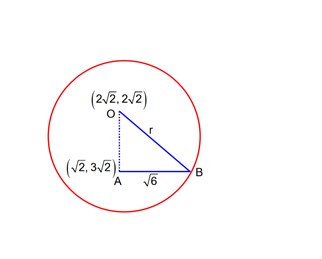Maths
Get insights from 6.5k questions on Maths, answered by students, alumni, and experts. You may also ask and answer any question you like about Maths
Follow Ask QuestionQuestions
Discussions
Active Users
Followers
New answer posted
4 months agoContributor-Level 10
An upper triangular matrix is a square matrix where all the elements above the diagonal are non-zero, and below it is zero. A lower triangular matrix is a square matrix where all the elements above the diagonal are zero.
New answer posted
4 months agoContributor-Level 10
The elements of a matrix may be real or complex numbers. If all the elements of a matrix are real, then the matrix is called a real matrix.
New answer posted
4 months agoContributor-Level 10
(2, 1) (1, 2), (2, 2) each element has 3 choice.
(3, 2) (2, 3) (3, 1) (1, 3) (3, 3) each element has two choices.
total function = 3 * 3 * 2 * 2 * 2 = 72
Case I
None of the pre image have 3 as image, total functions = 2 * 2 * 1 * 1 * 1 = 4
Case II
None of the pre images have 2 as image then number of function = 25 = 32
Case III
None of the pre image have either 3 or 2 as image
Total function = 15 = 1
Total number of onto function
= 72 – 4 – 32 + 1 = 37
New answer posted
4 months agoContributor-Level 10
Let z be equal to (x + iy)
(x + iy) + (x – iy) = (x + iy)2 (i + 1)
Equating the real & in eg part.
(i) & (ii)
4xy = -2x Þ x = 0 or y =
(for x = 0, y = 0)
For y =
x2
x =
=
of
=
New answer posted
4 months agoContributor-Level 10
For this limit to be defined 2x3 – 7x2 + ax + b should also trend to 0 or x ® 1.
2 – 7 + (a + b) = 0
(a + b) = 5 …………….(i)
Now this becomes % form we apply L'lopital rule
Now the numerator again ® 0 as x = 1
6x2 – 14x + a ® 0 as x = 1
6 . (1)2 – 14 + a = 0
a = 8 …………….(ii)
a + b = 5
(b = -3) ® from (i) & (ii)
Taking an Exam? Selecting a College?
Get authentic answers from experts, students and alumni that you won't find anywhere else
Sign Up on ShikshaOn Shiksha, get access to
- 65k Colleges
- 1.2k Exams
- 679k Reviews
- 1800k Answers

